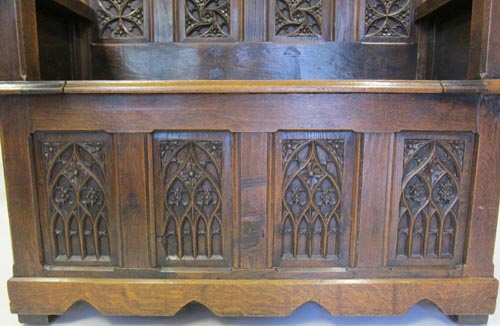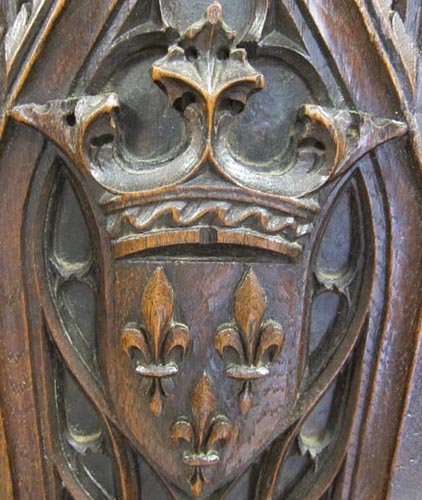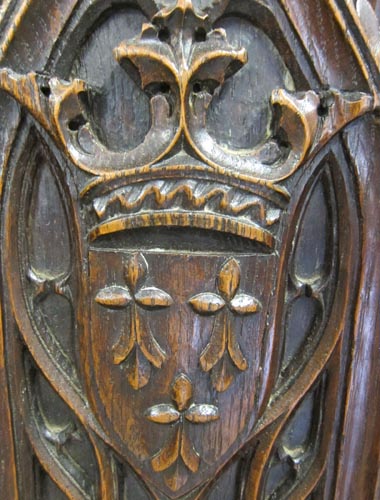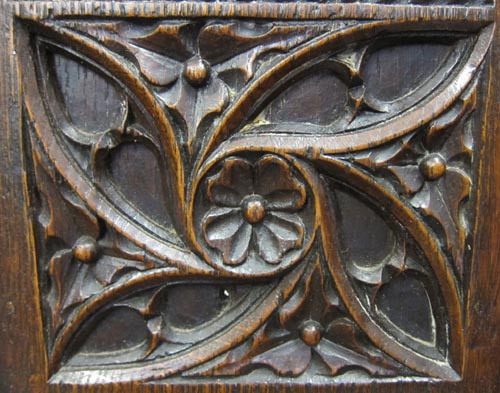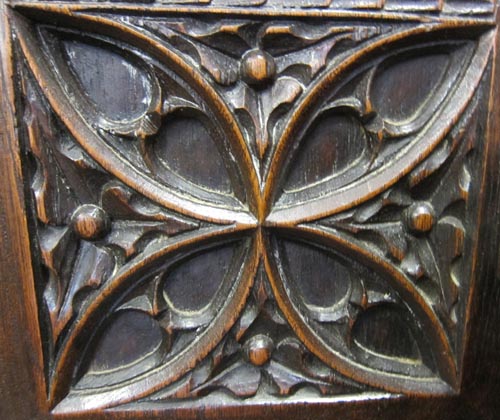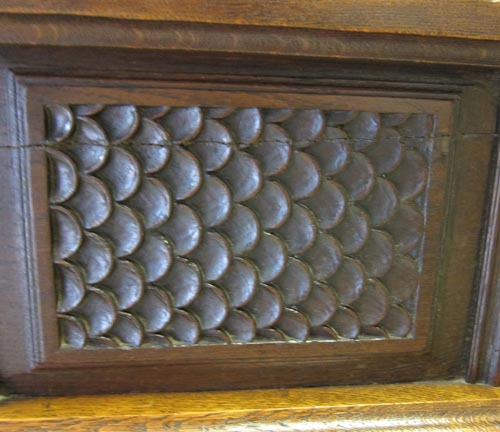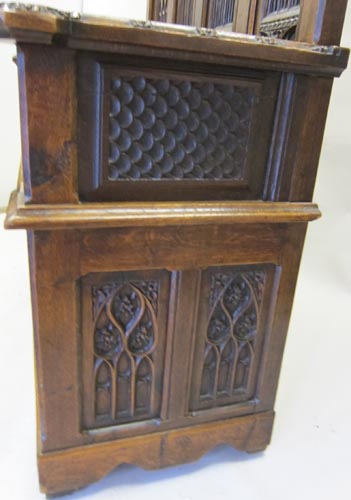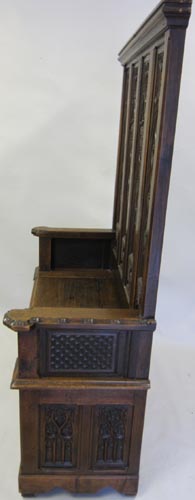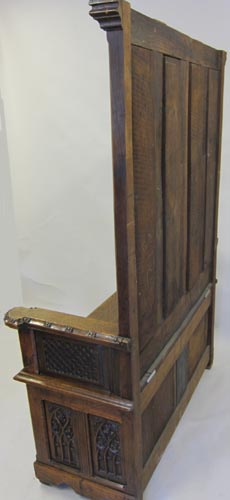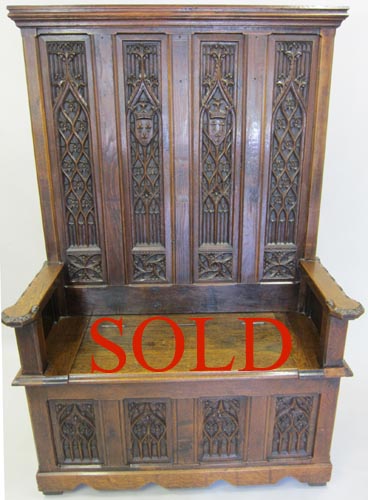
We have seen, and sold, a number of Gothic benches over the years but this one has proved one of the most unusual and lovely examples we have found of Gothic design and heraldic symbolism evoked in a 19th century creation.
In overall structure, it is remarkable for being so tall and broad. Taking the chaise cathèdre design stemming from the high-backed, heavily carved bishop's throne of medieval cathedrals, the designer of this bench created an architectural masterpiece with a utilitarian virtue — the storage space under the seat, derived from the original design for Gothic chests as the repository of a household's valuables. After all, what is a bench but a chest with a back and arms attached?
If furniture could talk, it would be helpful to those of us tasked with writing descriptions of pieces whose creators and original owners are long dead. But through the vocabulary of Gothic design and the language of symbolism used by medieval artists and their 19th century adherents, it is possible to crack the code and delve into what may have prompted the creation of a piece and why it is treasured.
This bench is unusually rich in decoration, leading us to think it must have been a commission or one-off design. Otherwise, the 19th century less costly short-cut of using plis-de-serviette panels or simple rectangles would have been found on the sides and below the seat. Instead, these areas are lushly carved in the tracery or fenestrage design taken from the windows of Gothic cathedrals. In keeping with that design, we see arches within arches comprising the four rectangular panels below the seat. A formula of four tall, slim lancet arches is used to support two central quatrefoils topped by a diamond shape filled by a flower — all within the graceful, sloping ogive arch surrounded by the pointed arch that forms the overall framework of the panel.
A variation on this design, but involving a formula of three lancet arches and three quatrefoils, is found on the two lower panels on the outside of each side of the bench. Just above them and directly below the armrest is a rectangular panel filled with the intricately carved and interlacing petal design so beloved in the Picardie region of northern France.
It is the top part of the bench — the back support — that is the most elaborate and intriguing aspect of this piece. Comprised of four tall panels of tracery, the two on the outside are identical and based on the design found in the panels below the seat — lancet arches supporting quatrefoils grouped within an ogee arch. This time, however, the ogee arch is tall and crowned by a stylized fleur-de-lys or flame characteristic of the flamboyant style of Gothic design so beloved by architects and designers in the late Middle Ages.
At eye level, and intended to attract the viewer's attention, are two heraldic shields topped by crowns demarcated by the same stylized fleur-de-lys motif seen at the top of the ogive arches. The shield on the left contains three fleur-de-lys, symbol of the Kingdom of France. The right contains three ermine tails, the symbol used by Duke Jean IV of Brittany when he created the chivalric Order of the Ermine in 1381. For more about the historic interaction in medieval times between the Duchy of Brittany and the Kingdom of France as commemorated in furniture, see Cabinet 3091 . That the symbols of both are displayed prominently and of equal size, would lead us to think that the person who commissioned this piece was French but ultimately of Breton origin.
In addition to the panels of tracery, the base and the edges of the arms are also beautifully carved in a manner that defies the solidity of oak and the difficulty of accomplishing such intricacy in a wood so tough and unforgiving. Overall, this is an extraordinary triumph of design, symbolism, and virtuosity in a Gothic masterpiece of 19th century devotion to creativity and genius of an earlier time.
We believe that this piece was used, at some time, as an entry piece with hooks for hanging garments - given the small repairs where such hooks might have resided on the stiles. Clearly, someone thought better of it and removed the hooks so that coats and hats would no longer obscure the beauty of the carving.
Reference
Boussel, Patrice, Les Styles du Moyen Age à Louis XIV (Baschet et Cie, Paris, 1979); Thirion, Jacques, Le Mobilier du Moyen Age et de la Renaissance en France (Editions Faton, Dijon, 1998); Viollet-le-Duc, Eugène, Le Mobilier Médiéval (Georges Bernage, editor) (Editions Heimdal, 2003)
Uses
This bench is ideal for an entryway or foyer where it can command attention, invite closer examination, and set the tone for a home incorporating antique furniture from the 19th century revival of Gothic and Renaissance design.
